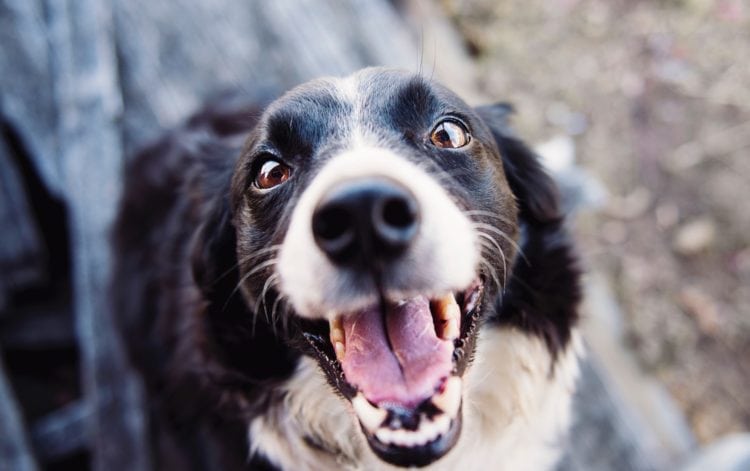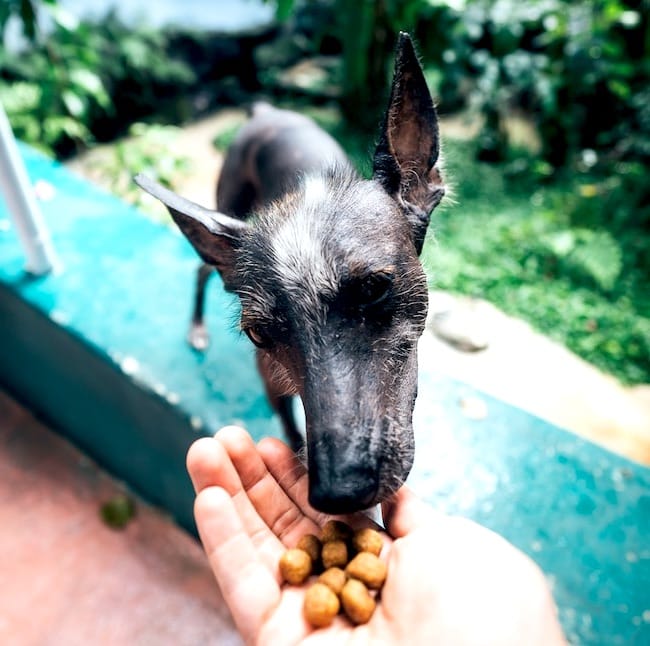
A dog traveling in the car
While every dog owner imagines those never-ending road trips with Fido happily in-tow, they don’t always turn out like in the movies.
It's not always as easy as getting your dog in the car and driving into the sunset; there are a few things to consider to keep him/her safe on your travels.
We have put together our top safety tips for traveling with dogs to give you the best chance of a stress-free vacation.
Table of Contents
1. Understand Your Dog's Temperament
The most important thing is for any owner to be realistic about the temperament of their dog.
How confident are you that your pet can cope with travel, and more so, will he/she behave?
If the answer those questions are no, it doesn’t mean you are house-bound, you just have a little more work to do.
2. Start with Training
Not surprisingly, training your dog on how to travel should be at the top of your list. He/she should be comfortable on all the trips you take, including those longer ones.
How he/she travels is up to you, whether you put him/her in a crate in the back of the car, or attach a harness. Either way, your dog needs to be safely restrained at all times.
Introduce this slowly. If he/she is crate trained at home already, it’s slightly easier to transfer this into a car.

Throw treats inside the crate intermittently.
3. Crate Training a Dog for Travel
Set up the crate at home and allow your dog to explore it. Let him/her sniff and go in if he/she chooses.
We know that dogs are more likely to repeat a behavior if something good happens, so we need our dogs to learn good things happen in the crate.
Once he/she is comfortable in and around the crate at home, transfer it to your car and do the same again. Let him/her explore and sniff once it’s in the car and throw treats inside.
You can give him/her a chew toy in there if you need a longer distraction.

Dog waiting to go in the car
4. Start with Short Journeys
Once he/she is confident in the crate in the car, start with slow journeys (five to ten minutes at most).
When you return home, praise and reward him/her, your dog will learn to associate the destination as the “good thing!”
Slowly increase the length of the journey, 15-20 minutes, 30 minutes, etc.
If he/she is showing any signs of distress, stop the car when it is safe, let him/her out and go for a short walk to calm him/her down. Return to the car when you are sure your dog is ready.
If you are attaching your dog to a harness, a similar approach applies. You need him/her to get used to the harness and associate it with good things.
So again, attach the harness at home and praise and reward your dog while wearing it.
Once he/she has accepted the harness, move over to the car.
5. Use a Harness in the Car
Attach your dog to the harness in the car and praise and reward.
Leave him/her attached for a minute or so and then release. Slowly build the time spent in the harness in the car, one minute, two minutes, three minutes, and so forth.
Once you are sure he/she is confident in the harness, start with short journeys as above. Slowly increase the journey length.
Again, if he/she shows any signs of distress, stop the car when it is safe to do so, remove him/her from the car and take him/her for a short walk. Return to the journey when your dog is calm.
You should only take your pet on journeys when you are confident he/she can travel comfortably.
As a driver, your eyes should be firmly on the road, along with your attention. You don’t need to be worrying that your dog is getting stressed or trying to gnaw his/her way out of the crate or harness! To find a good harness for your dog, check this review from Mypetneedsthat.
6. Training Basic Commands
Before you set off on any trip, it would also be wise to train the basic commands; sit, stop, and leave:
- “Sit” will keep your dog out of trouble in restaurants
- “Stop” could help save his life around busy roads or parking lots
- “Leave” could be that saving grace which keeps you from spending the night in the ER
See also: Husky Trekking with Spruce Island Husky

Feeding a dog a treat
Before you train any command, he/she needs to respond to his/her name, and have good recall.
To teach your dog his/her name, every time you say his/her name, increase your pitch. Your dog should pay attention to the change in tone and look at you. Praise him/her and give a treat (repeat regularly).
Recall
Here is where you need high value or particularly stinky treats.
Now your dog knows his/her name, again, increase the pitch of your voice and shout your dog's name + “come!”
With some high-value treats in your hand, he/she should come straight to you, praise and reward.
If he/she isn’t food orientated, use a ball or toy that he/she loves. Use the same principle.
You need to be more exciting than anything else that may be going on!
Keep commands simple, one or two words is more likely to give you the result you are looking for.
Sit
Sit with your dog in front of you, hold a treat by his/her nose.
Move the treat backward, so he/she has to tilt his/her head to follow it. His/her bottom should instinctively fall to the ground.
As soon as he/she sits, label the behavior, and give him/her the treat. Repeat several times, labeling the behavior as it's done.
Stop
Stop with your dog off leash in a secure area, call him/her to you.
As he/she is running towards you, throw treats behind him/her. He/she will stop to eat them. As he/she stops, label the behavior. Repeat.
Moving forward, he/she should stop and look for treats as soon as you say the word!
Leave
This one often confuses people, but stick with us, it works.
Hold a treat in a closed hand. Hold it by your dog's nose. He/she will likely try to get at it. Don’t let him/her.
As soon as he/she moves his/her nose or head away, give the treat. Repeat.
Your pet is learning that by ignoring the treat, he/she eventually gets it anyway. Label the behavior as you repeat “leave!”
If you are struggling to train any of these commands, keep your dog on a leash whenever you are traveling.
7. Keep on Leash in New Places
In any new place, there will be plenty of new scents and things to explore.
Unless you are confident in your dog's ability to listen to you and perform these commands, it’s just not worth the risk.
He/she could become a nuisance to others, or worse, get into danger.
Summary
When you are planning a trip, consider your route, and plot out toilet stops.
Your dog will need to go potty and have a drink of water.
Remember your poo bags, too. Look for truck stops with open spaces so you can take him/her for a walk to stretch those legs!
Keep your dog under control at all times and be mindful of what’s around you as you are letting him/her out the car; is he/she likely to see something and run after it?
Possibly a little more to think about before you take your dog on that road trip, but keeping him/her safe will make your vacation a lot less stressful.
Putting the work in before you head out will undoubtedly be worth it, for all of you.
John is a full-time dog trainer specializing in animal behavior, he is a parent to two dogs, (Jamie and Jeff) who he travels Europe with and is an editor for All Things Dogs.
Planning a trip? Go Backpacking recommends:
- G Adventures for small group tours.
- Hostelworld for booking hostels.
